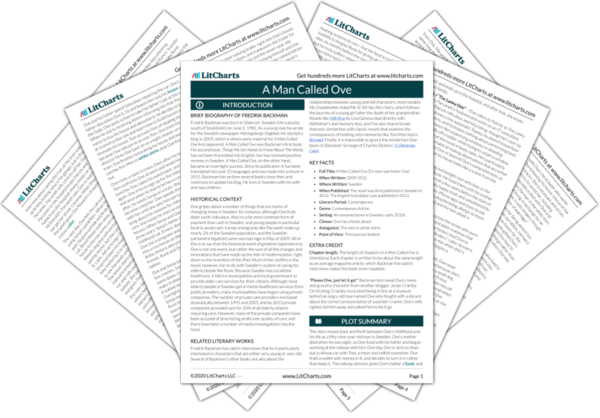Ove's principles do leave room for him to help others, but at this point, only if he's also adhering to his “principles” (and ruining someone else's day in the process). Ove continues to insist on remaining entirely disconnected from his new neighbors and shows no desire to get to know them at all. The three-year-old, on the other hand, very much wants to draw Ove into her family and her community.
